Welcome to a vibrant world where creativity intertwines with fiber, capturing the essence of yarn craftsmanship. From the soft touch of silk to the durability of hemp, each yarn tells a unique story. Whether you’re blending colors or experimenting with different types of yarn, the act of creation can be a deeply satisfying journey. In this blog, we will explore a variety of yarn crafting ideas, showing how sustainable practices can be woven seamlessly into every project. Let’s embark together on a colorful adventure where imagination knows no bounds!
Table of Contents
- The Historical Importance of Yarn in Art and Culture
- Techniques and Materials: A Comprehensive Guide to Yarn Weaving
- Exploring Sustainable Options
- Exploring the Therapeutic Benefits of Spinning
- Innovative Trends in Yarn Art: From Traditional to Modern Practices
- Sustainable Practices in Yarn Production and Artistic Expression
- Conclusion
- Frequently Asked Questions
The Historical Importance of Yarn in Art and Culture
The historical importance of yarn in art and culture dates back to the earliest periods of human history. Moreover, yarn production was a craft that reflected the manual skills of early civilizations. Therefore, yarn weaving has become part of cultural identity. In this case, yarn has carried not only clothing but also meaning. Thus, each motif and pattern reflected the memory of societies. Moreover, the spinning arts are an important indicator of traditional women’s labor. Moreover, looms have been one of the social centers of homes. Therefore, spinning is not only an economic but also a cultural activity. In this way, it has been the carrier of values passed down from generation to generation. On the other hand, the art of spinning has taken on symbolic meanings in many cultures. Thus, knots, colors and patterns are linked to belief systems.
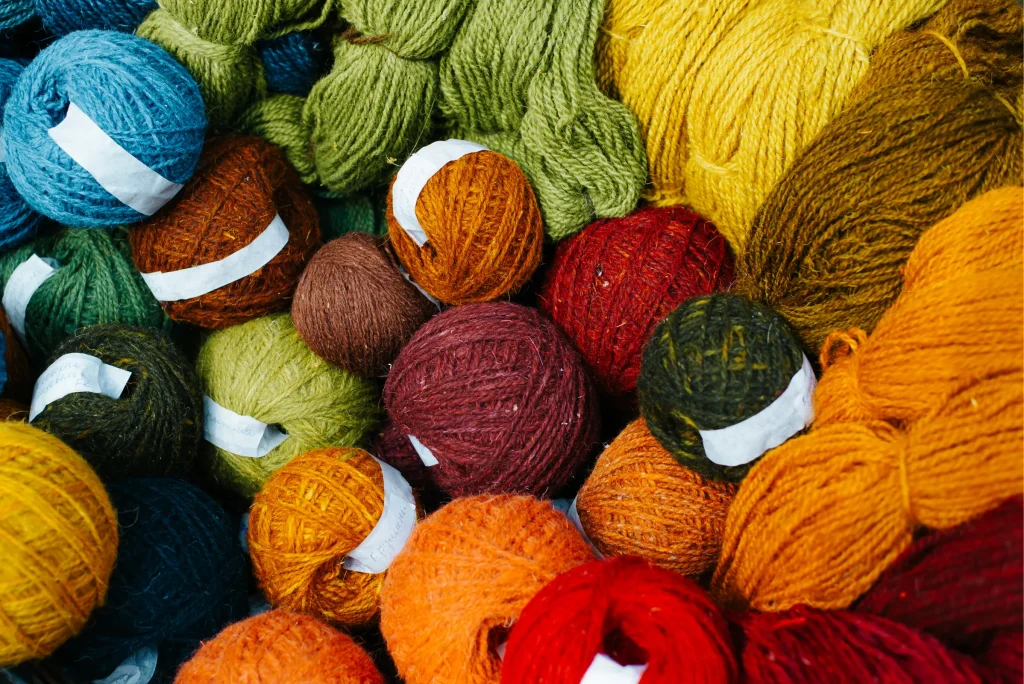
Techniques and Materials: A Comprehensive Guide to Yarn Weaving
Techniques and materials: a comprehensive guide to yarn weaving presents the basics of the craft. Moreover, the development of different techniques has been shaped by cultural diversity. Therefore, weaving styles specific to each region have emerged. In this case, the choice of materials is as important as technical knowledge. Thus, quality yarn weaving is both durable and aesthetic. Moreover, hand weaving and machine weaving techniques give different results. Furthermore, weft and warp systems determine the structure of the product. Therefore, the type of yarn used has a direct impact on the result. In this way, materials such as cotton, wool and silk offer a different feel. On the other hand, synthetic fibers offer solutions that increase durability. Thus, both natural and artificial materials are used in modern weaving.
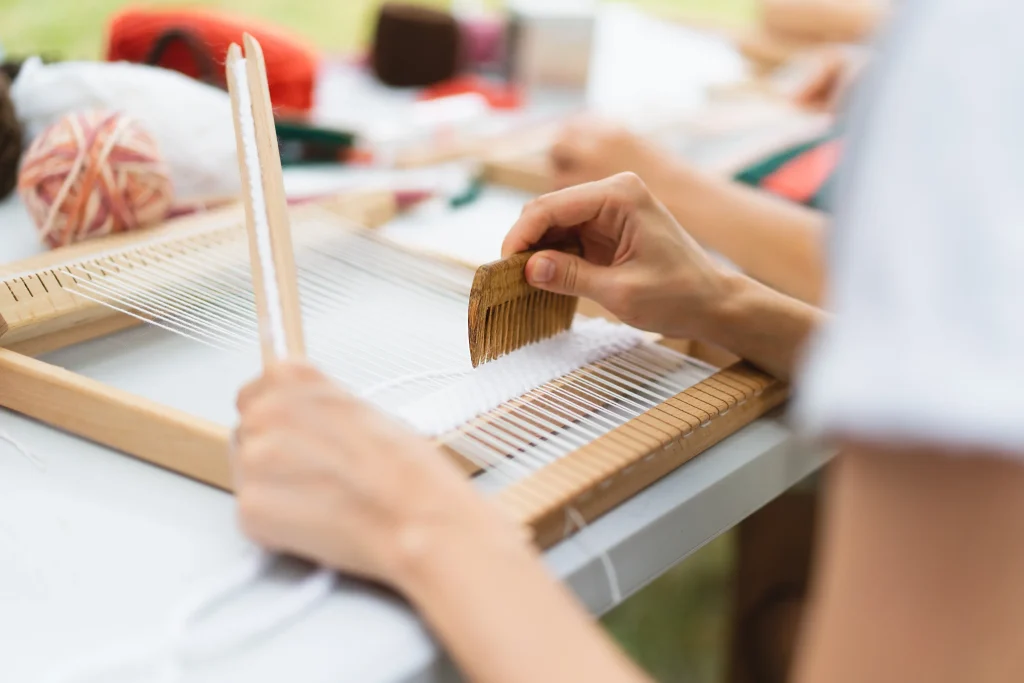
Exploring Sustainable Options
Exploring sustainable options promotes environmentally friendly production and consumption habits. It is also an important step that contributes to the conservation of natural resources. Therefore, sustainability is becoming increasingly important in the textile industry. In this case, the trend towards recyclable and organic materials increases. Thus, the amount of waste is reduced and the damage to nature is minimized. Moreover, sustainable yarns are produced with energy-saving processes. Also, production techniques with low water consumption are preferred. Therefore, the carbon footprint is also significantly reduced. In this way, both environmental and economic advantages are achieved.
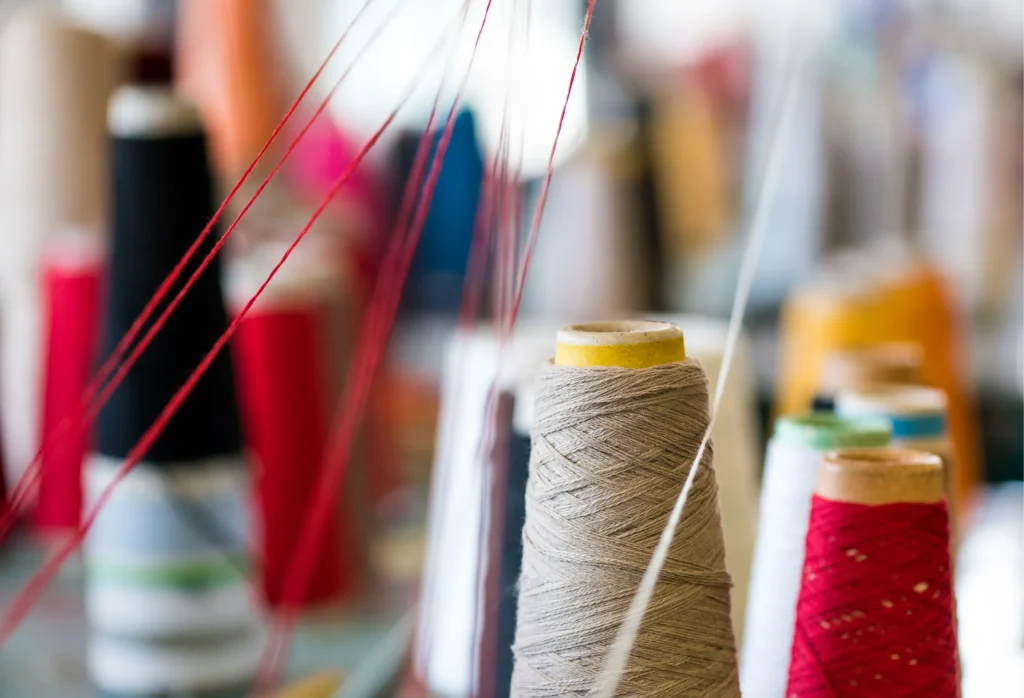
Exploring the Therapeutic Benefits of Spinning
Threadwork offers a unique blend of creativity and relaxation. As various patterns are woven, the rhythmic movements can soothe an anxious mind and nurture a sense of awareness. This is why many people think that knots of thread represent the complexities of life and allow for personal reflection. As a result, working with your hands not only activates your hand, but also improves your motor skills, providing a therapeutic outlet. Isn’t it fascinating how a simple ball of thread can transform stress into serenity?
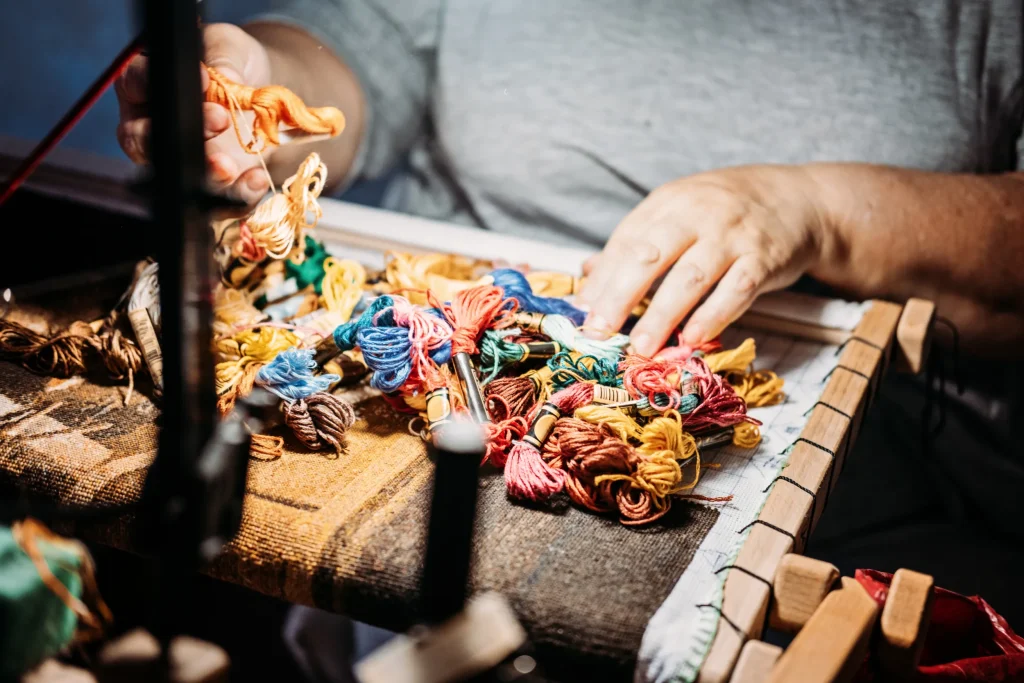
Innovative Trends in Yarn Art: From Traditional to Modern Practices
Innovative trends in yarn art: a rapid transformation from traditional to modern practices. Furthermore, craft techniques are merging with digital design to create new forms of expression. Therefore, manual labor and technology are intertwined. In this case, artists are turning to freer and more experimental work. Thus, traditional weaving forms are revitalized with contemporary interpretations. Moreover, the use of sustainable materials increases the artistic value. In addition, natural dyes and organic yarns are preferred. Therefore, the works become both aesthetic and environmentally friendly. In this way, art production is integrated with ethical values. On the other hand, yarn art is also carried into architecture and interiors. Thus, woven surfaces contribute to spatial design. In addition, three-dimensional yarn installations attract attention.
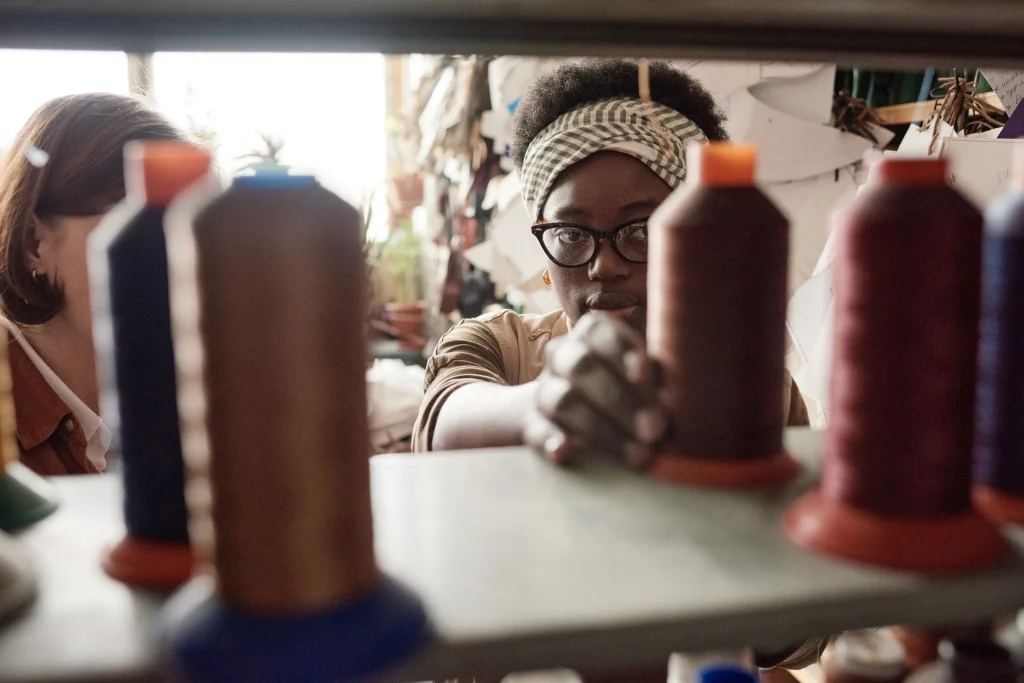
Sustainable Practices in Yarn Production and Artistic Expression
In the world of yarn production, embracing sustainability is no longer a choice, but a necessity. Many artisans are exploring eco-friendly materials and processes that minimize environmental impact. For example, natural fibers are promoting biodegradable practices that offer a great alternative to synthetic options. This shift not only encourages the use of sustainable resources, but also inspires creativity in yarn crafting ideas. However, balancing artistry and ecological responsibility can be difficult. It requires thoughtful innovation and a commitment to the future of our planet, which is vital in today’s artistic expressions.
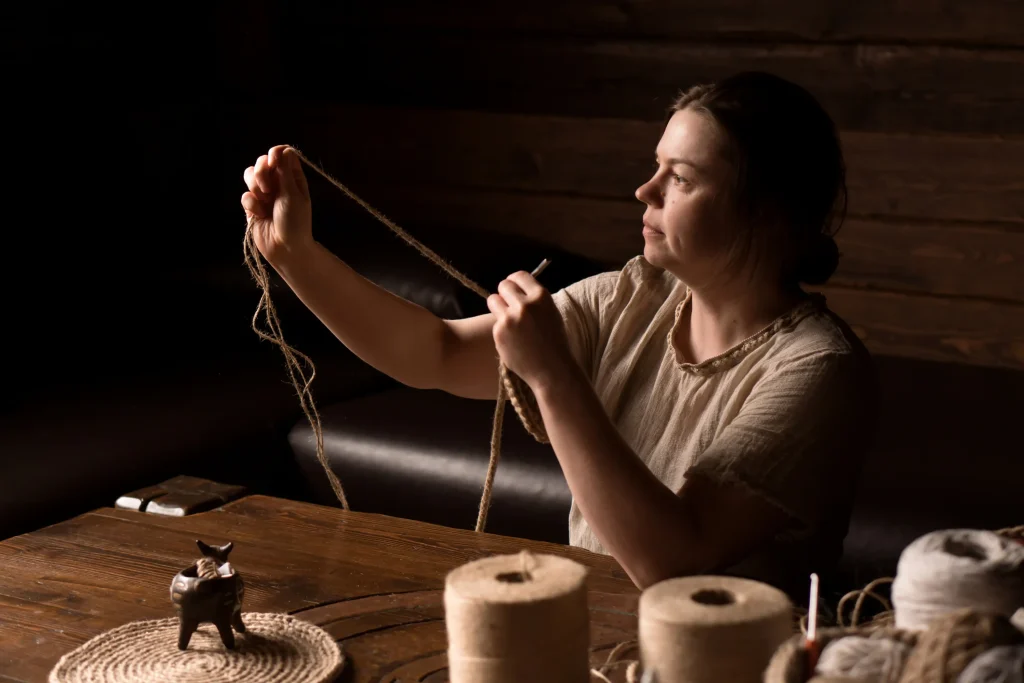
Conclusion
In conclusion, The Art of Spinning: Weaving Creativity into Every Stitch represents a modern understanding of production nourished by tradition. Moreover, the art of yarn carries the traces of the past and shapes the design language of the future. Therefore, each stitch is not only material, but also carries meaning. In this case, artists and artisans develop original forms of expression through yarn. Thus, technical mastery and aesthetic sensitivity meet in the same work. Moreover, the use of yarn in contemporary art practices is increasingly diversifying. Furthermore, sustainability and storytelling make yarn art more valuable. Therefore, it gains visibility on different platforms, from education to exhibition spaces. In this way, it establishes an emotional and cultural connection with the audience. In conclusion, Yarn Art: Weaving Creativity into Every Stitch is not just a title, but a powerful expression of artistic transformation. In this context, yarn art is a silent but effective means of both individual and social expression.
Frequently Asked Questions
What is the historical role of thread in art and culture? Throughout history, yarn has gone beyond the production of clothing and has been a means of cultural identity and expression.
What are the traditional yarn weaving techniques? Warp-weft, carpet knot, hand loom and shuttle are the most common techniques.
Which materials are used in yarn weaving? Natural fibers such as cotton, wool, silk, linen and synthetic materials such as polyester.
What are the sustainable yarn options? Environmentally friendly yarns such as organic cotton, bamboo fibers, recycled polyester stand out.
How does yarn crafting contribute to mental health? The repetitive rhythmic movements create a stress-reducing effect by providing focus and relaxation.
How does modern yarn art differ from tradition? Traditional techniques combine with contemporary materials and concepts to create experimental forms.
Why is sustainability important in yarn art? Because the materials used in art production directly determine the environmental impact.
Can recycled yarns be used in art projects? Yes. It is preferred in projects that offer both aesthetic and ecological value.
Can the dyes used in yarn art be environmentally friendly? Yes. Natural dyes of plant origin or water-based non-toxic options can be preferred.
How does yarn art contribute to personal development? It supports the development of patience, attention, creativity and hand-eye coordination; creates mental awareness.

